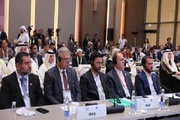Recently, the use Direct-methanol fuel cells or DMFCs, due to their high energy conversion efficiency, and lack of environmental and sound pollutions, is being recommended as an efficient way to generate electric energy.
Alireza Sharif, the project manager, said “at the moment, the commercial membrane ‘Nafion’ is the most common proton exchange membrane used in fuel cells, but Nafion is expensive and its high Methanol leak has prevented the commercialization of DMFC technology.”
According to him, a natural and inexpensive polymer has been used as the background phase and graphene oxide was applied to improve the physical and chemical properties for synthesizing a membrane with electrical conductivity.
Results show that the use of modified nanoparticles increases the selectivity of nanocomposite membranes seven times more than the original membranes. Also, the nanocomposite membrane has a proton conductivity five times more than the original membranes.
Sharif maintained that the use of the study’s results will lead to a drop in the finished prices of feul cells at an industrial scale.
The results of the research have been published in Journal of Power Sources, Vol. 306, 2016, pp. 541-551.
MS/3860309
























Your Comment